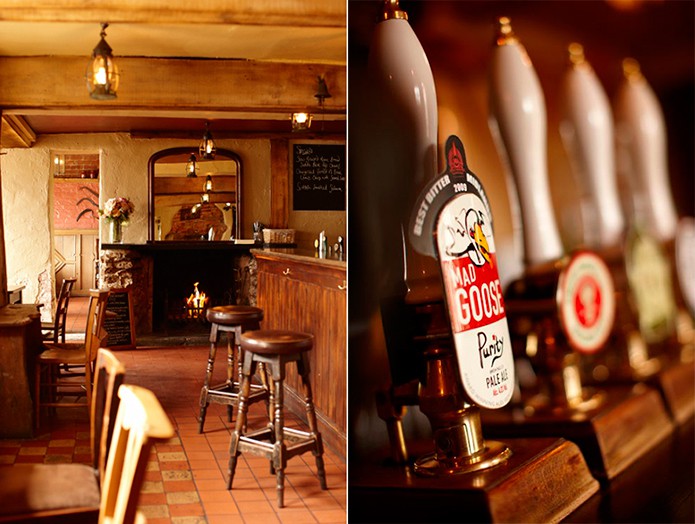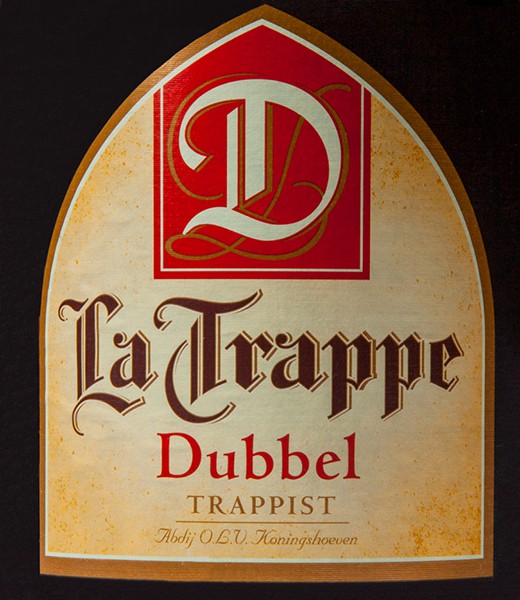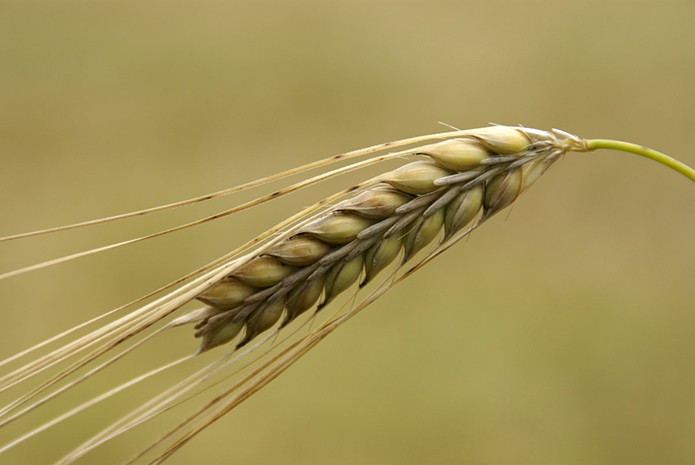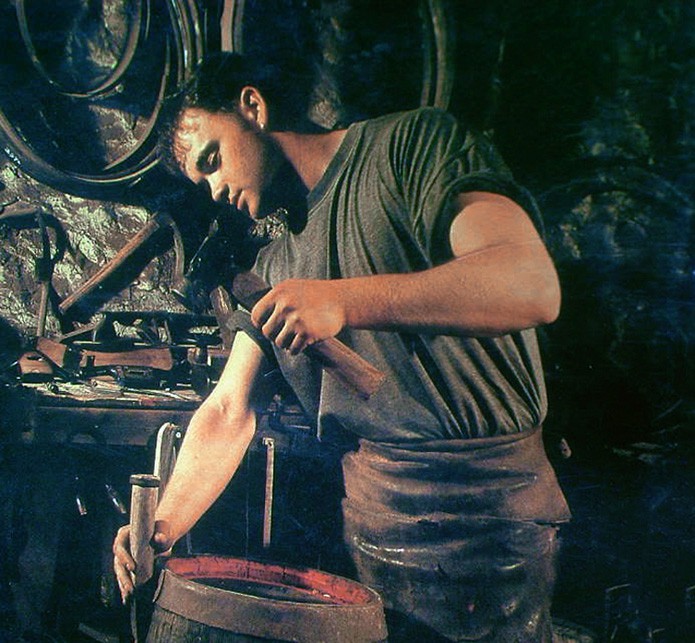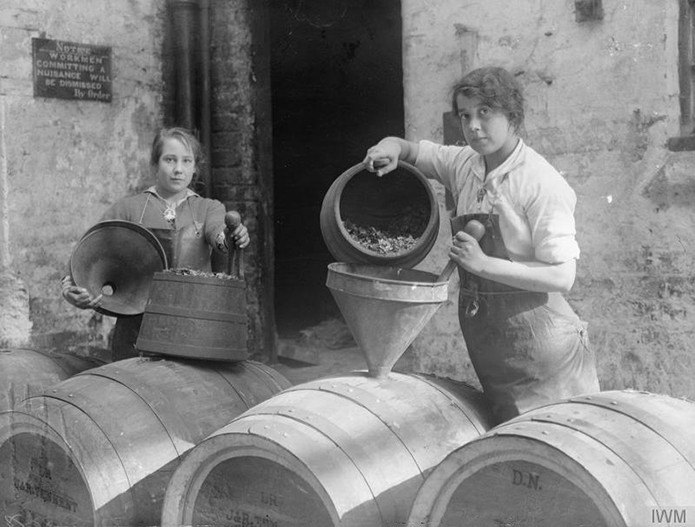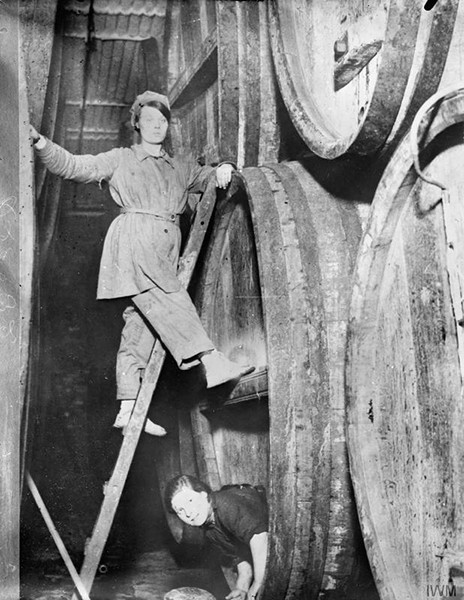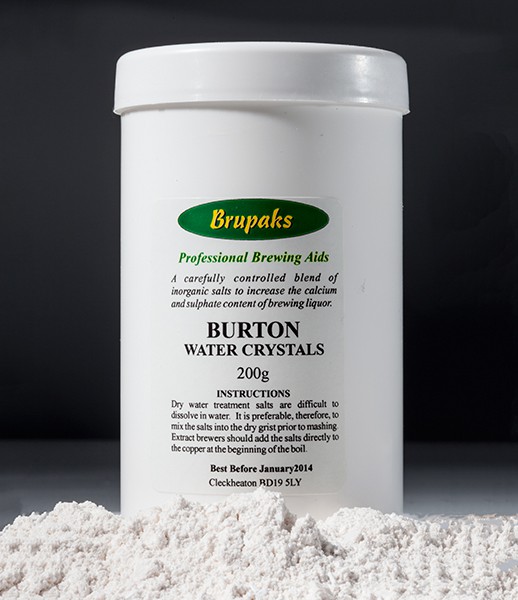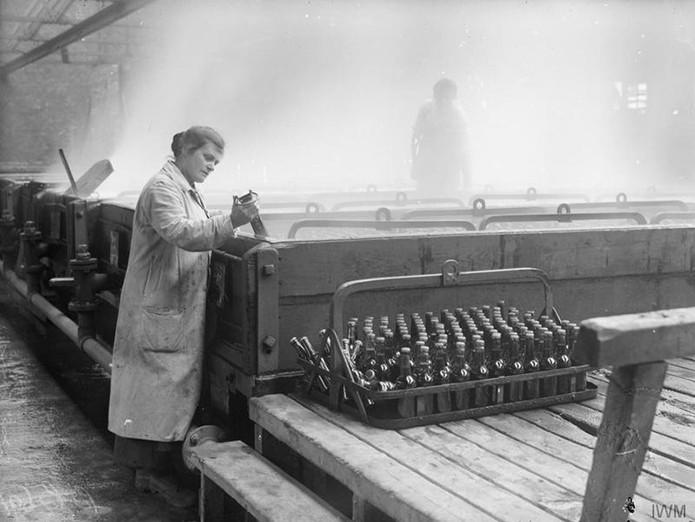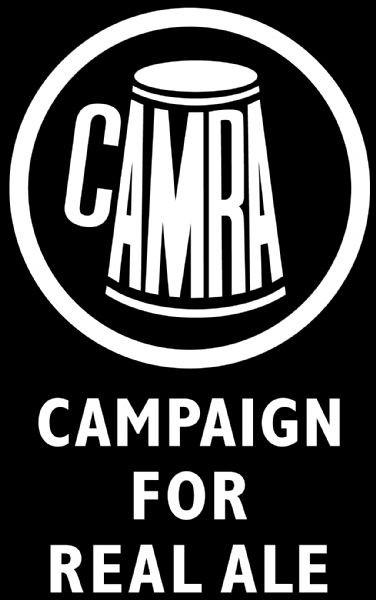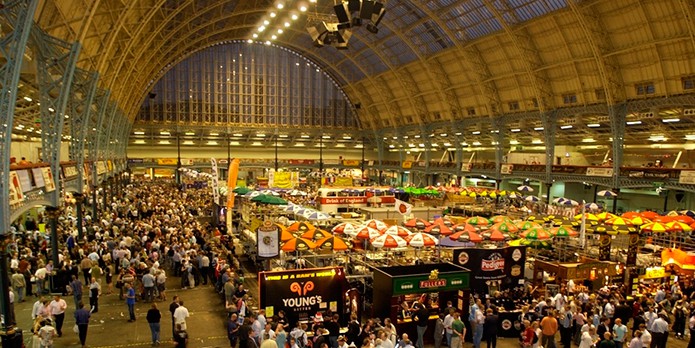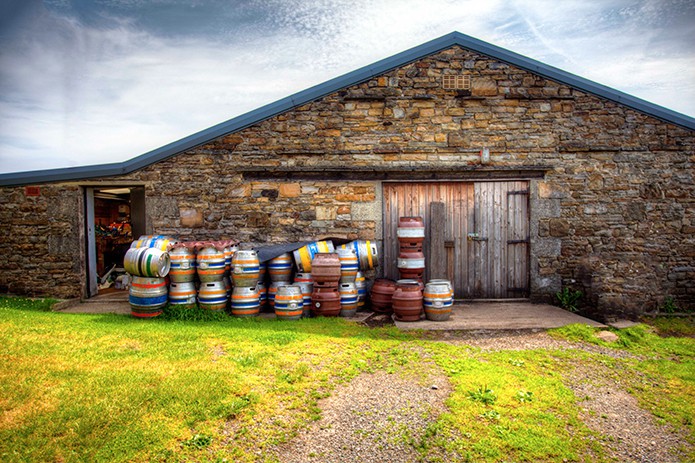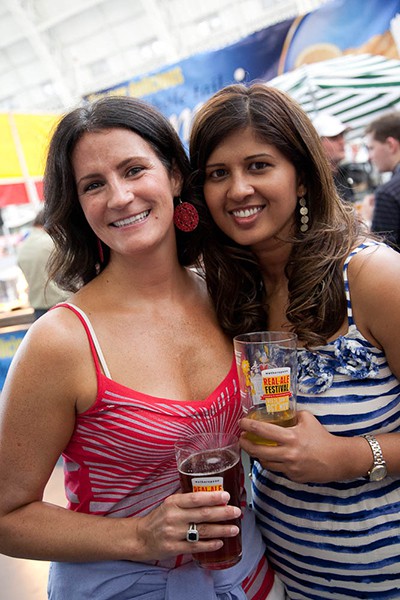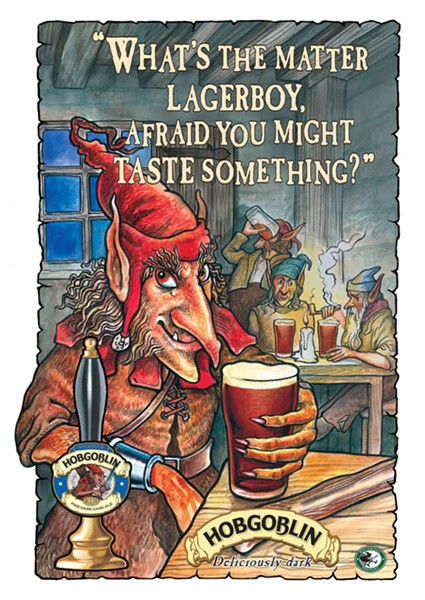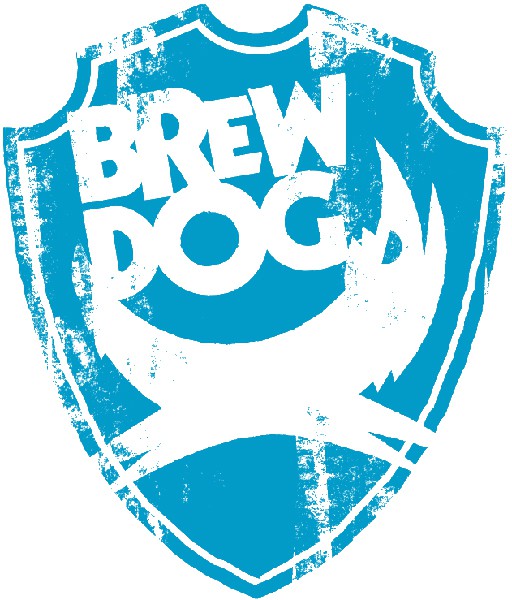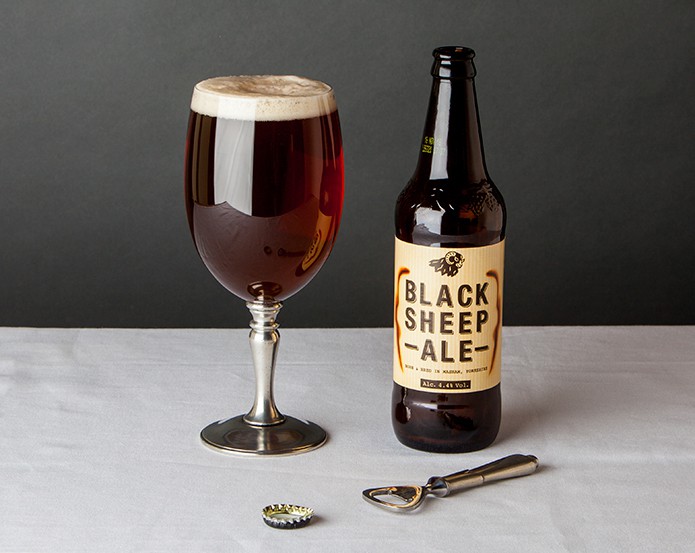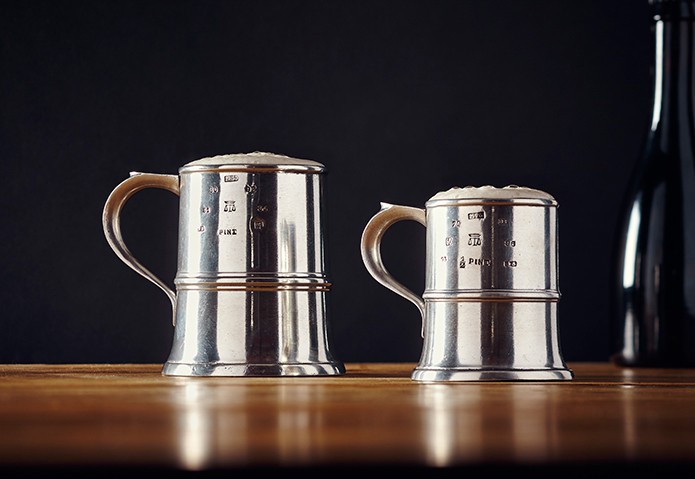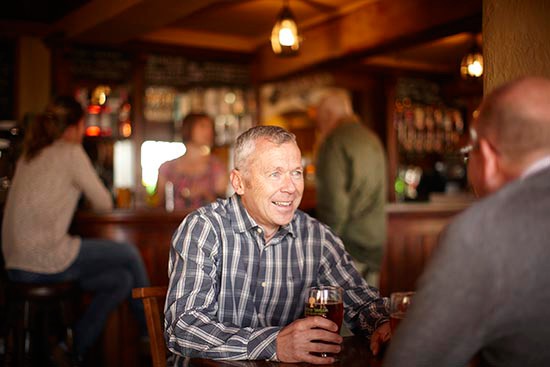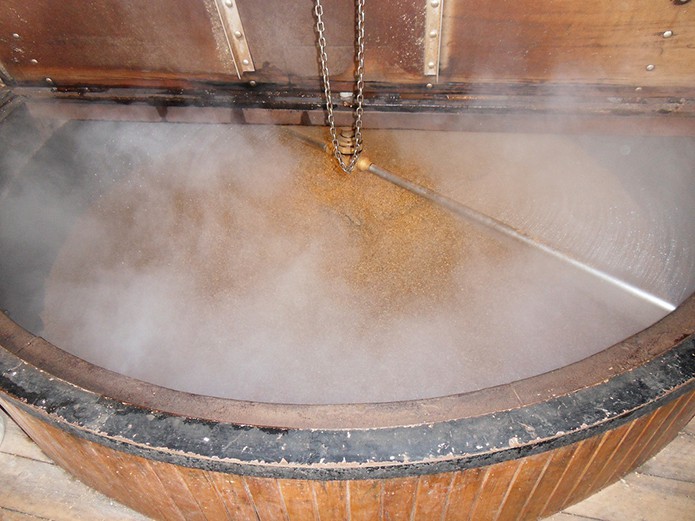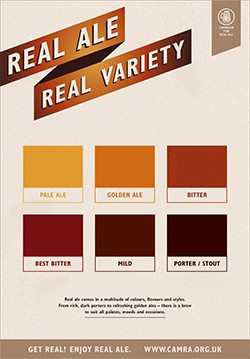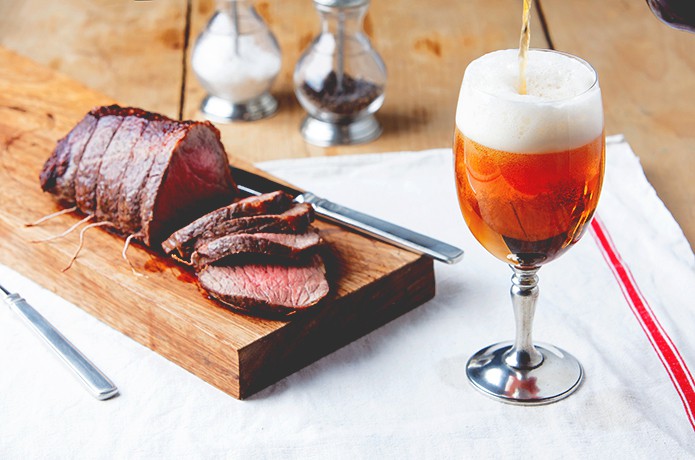
“Make mine a pint of… dark, blonde or red” – it is a matter of taste. Beer choice is in part dependant on mood, occasion, or sometimes simply because of the weather.
Maybe a dark on a winter’s afternoon, cheeks ruddy with the sting of cold, and flush of a good brisk walk to ensure justification, muddy boots left in the porch, seats won closest to the open-fire, wood smoke and Sunday roast pervading the nostrils.
Definitely a blonde on a summer’s evening; the last lazy rays of sunlight languidly stretching through the distant hazy trees, highlighting the dance of roaming insects and chasing swallows, whilst split-and-share packets of crisps disappear in a flurry of fingers.
Or is it a red for the first? Rushing anonymous headlights flash past, illuminating the rain-drop speckled windows in the rapidly encroaching darkness, the busy door intermittently allowing the splash of puddles under Friday rush-hour wheels and heels to disturb the relief that the weekend has started…
A modern reflection of an age-old tradition; a pint of beer. Beer is consumed, sipped, swallowed, quaffed and downed the world-over in many different forms; European ‘continental’ lagers, Indian and Chinese rice beers, African millet beer, South American maize beers, North American pale lagers, and British bitter. But it is the real beers, in my opinion, that are the most satisfying to consume, whether that is Belgian Trappist beers, American cask-conditioned beers or English microbrewery innovations. As it is only these beers, created, stored and pulled traditionally, that can be called ‘real’ ales, and behind their stunning colours, aromas and flavours are some real tales…
Beer History
Beer has been consumed for over 8 millennia for a variety of purposes; medicinal, within celebrations, quenching thirst, liquid sustenance or just simply for pleasure. It is thought to have been first brewed in Mesopotamia (largely modern-day Iraq) around 6000 BC, and there is evidence that a more ‘modern’ barley beer was produced in the Middle East around 3400 BC.
Brewing in Britain is literally part of the woodwork; beer-making dates back to Neolithic times, where it was stored in wooden barrels, held together with wooden hoops developed by northern European Celts during the Iron Age (a precursor to modern day ‘Coopering’; a traditional British craft). The Romans were sustained in Britain by a type of beer known as Celtic Ale, known as Ceruese (interestingly the Welsh for beer is Cwrw – pronounced ku-ru)), and for those interested in etymology, ‘Old English’ for ale was alu or aelu, deriving from the ‘Old Germanic’ origins of alo, olu or alus, consolidating evidence of British ale’s northern European roots. Wherever grapes couldn’t be cultivated, but barley could, beer (in whatever rudimentary form) was being made, and by the late Middle Ages beer was brewed all over northern Europe, from monasteries to private dwellings.
Ale (a hopless beer) was often sold wherever it had been brewed; an ‘ale-wife’ would put an ‘ale-wand’ outside her home to signify she had ale to sell (which is the origin of the British pub and British pub sign!). Gradually men became involved in the brewing process, and brewing became more organised into guilds and commercial breweries. With ale becoming more consistent and reliable, inns, taverns and alehouses ceased brewing themselves, and bought from the local brewery. An ‘ale conner’ (a type of early tax-man) was appointed to check the quality of the beer, ale and bread – the important staples of that era! Legend has it that they sat in ale and beer poured onto a wooden bench, and depending how sticky they felt upon standing, this would signify its strength, and an appropriate level of duty would be imposed!
Nowadays the terms ‘beer’ & ‘ale’ are used interchangeably (confusingly), but at one time they were very separate; ale (and mead) referred to an alcoholic drink brewed without hops made by fermentation from malted barley, originally bittered (flavoured) with gruit (a mixture of herbs and spices), while beer referred to essentially the same drink, but flavoured with hops.
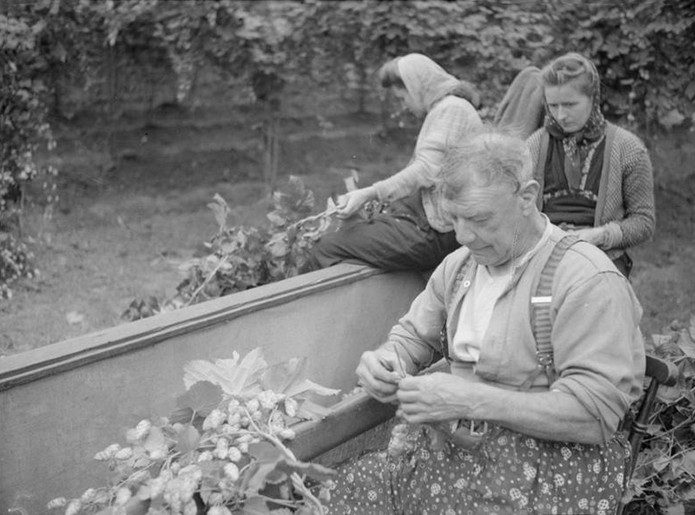
Hop-picking on a hop farm in Yalding Kent, removing hop ‘cones’ from the vines, 1944. Image courtesy of IWM
Britain started to import hops from Holland, France and Germany as early as the 15th Century, but hopped beers took a while to catch on; a brewer was not allowed to make both ale and beer, and there was a view that hops spoiled the healthiness of beer. Nevertheless, hop-fields, especially in Kent, began to be planted in the early 16th Century as un-hopped ale gave way to the increasingly popular hopped beer.
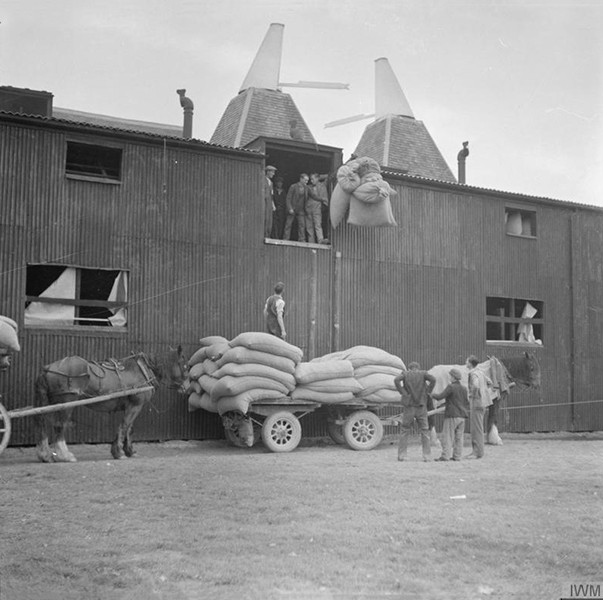
Horse-drawn carts arrive at an oast house on a hop farm in Kent with sacks of freshly-picked hops. The hops will be dried and compressed ready for transportation to the brewer, 1944. Image courtesy of IWM
It is in fact the hop flowers that provide the taste we now recognise as beer today; they balance the sweetness of the malt, giving distinctive bitter flavour and flowery aroma. Hops are a natural antiseptic, and they act as a stabilizer and preservative.
Historically beer was considered safer than water, as it had been boiled, at a time when water was prone to carrying disease. Containing vitamins, iron and folic acid, it was considered an everyday healthy and nutritious drink, and was consumed with every meal, as well as for celebrations of the time; such as wassailing (house-visiting wassailing, or Yuletide caroling, rather than the more well-known orchard-visiting wassailing, where cider was consumed), lamb-ale (during sheep shearing season) and bride-ale (where a bride would sell ale to cover the cost of her wedding). It was known as ‘small beer’ as it contained just enough alcohol to act as a preservative, but not strong enough to intoxicate whilst hydrating (generally, about 1% or so alcohol, compared to modern beer strengths or 3-6%); John Burnett’s Liquid Pleasures describes how even nursery-age children of the aristocracy had a daily beer allowance of 2 pints to ensure good health.
The 18th Century saw great advancements in the brewing process in Britain. Thermometers, hydrometers, attemperators (a device used to control steam temperature) and large storage vats improved the quality, consistency and scale of manufacturing.
Technological Developments in Brewing
By the late 1700s a system of progressive taxation, based on the strength of beer in terms of cost of ingredients (and not sticky bottoms!), led to 3 types of beer – table, small and strong. Also at this time the inventor Joseph Bramah improved on a rudimentary earlier invention for a beer engine, to pump beer from the vessel in the cellar to the bar, no doubt much to the delight of barkeepers across the country!
In the early 19th Century barley & hops became taxed, and brewing was limited to ‘common brewers’ (who supplied public houses) and public houses. As the common brewers became owners of public houses, monopolies developed. However, in 1830 the Beerhouse Act allowed anyone to brew and sell beer, ale or cider from a pub or home for a moderately priced licence. This was thought to have been influenced by the over-consumption of gin by the working classes during the 18th and 19th Centuries, scenes which were immortalised by William Hogarth’s famous paintings ‘Beer Street’ and ‘Gin Lane’ which were a satirical depiction of British society in the mid-18th Century, showing the merits of drinking beer and the evils of drinking gin.
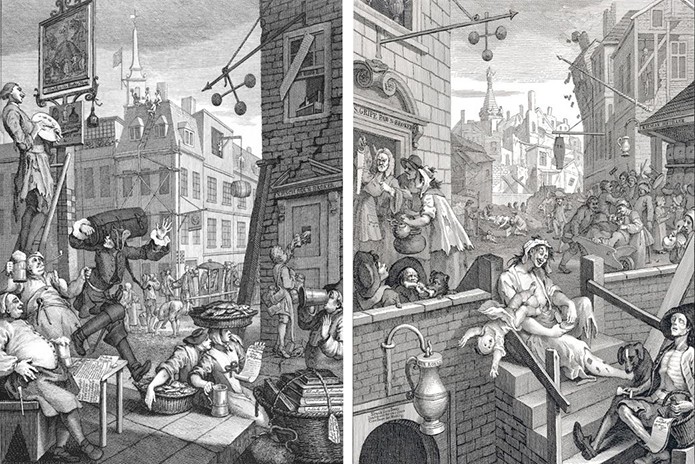
Two prints by English artist William Hogarth in 1751 contrast the idea of a healthier, beer-drinking society (left hand image) with that of a degenerate gin-swilling one (right hand image). Image courtesy of Wikipedia
One beer brewing stronghold in Britain at this time was the Midlands, where a quarter of all ale produced in Britain was from Burton-upon-Trent alone. Beer from this area was a light, well-hopped ‘Pale Ale’ due to the local water, rich in Gypsum, which imparted a particular quality, extremely popular amongst Victorians. The resonance of this beer brewing area was so ingrained in the British psyche that a century later, during the Second World War, when a comrade was killed, typical British humour in the face of tragedy would quip ‘He’s going for a Burton’! Later, the chemist CW Vincent replicated the chemical composition of the Burton water, giving rise to the term ‘Burtonisation’, paving the way for any brewery to produce the popular Pale Ale (the forerunner to more modern day bitters). This hoppy light beer was easy to transport, further favouring the strength of the large breweries.
By the 19th and early 20th centuries, with technological advancements in brewing (including serving ‘draught’ beer from pressurised containers) and an efficient transport network being developed across Britain, the brewing industry had become heavily commercialised and mass produced, and the ‘craft’ of traditional beer-making was disappearing fast. The craft brewers were further affected by the austerity of the beginning of the 20th Century, with malt rationing limiting production, as well as pressure from the Temperance movement at that time leading to changes in legislation, including reduction in strength, higher taxation, a ban on ‘buying a round’ and restricted opening hours.
Artificial carbonation was introduced in Britain in 1936, and by late 1960s this was the way Britain served draught beer from metal kegs. The popularity of traditional real ales such as ‘milds’ and traditional ‘bitters’ fell further as big brewers consolidated the mass processing of beer by wholly converting to non-traditional processes such as filtration (ridding of any naturally occurring sediment), pasteurisation (to ensure a financially efficient shelf-life), and using intensively farmed ingredients, thereby affecting the overall taste.
This, together with a decline in heavy industry at this time, meant traditional heartlands of mild and bitter drinking (the Midlands & the North) were no longer the heartland for ‘British workers’ drinking ‘British Beer’. Mild and bitter made way for keg bitters and lagers, sold in increasingly ‘mega-brewery’ owned pubs, which had been buying and franchising the traditional ‘free-house’ pubs as quickly and effortlessly as one can get through a dish of peanuts and pork scratching at the bar!
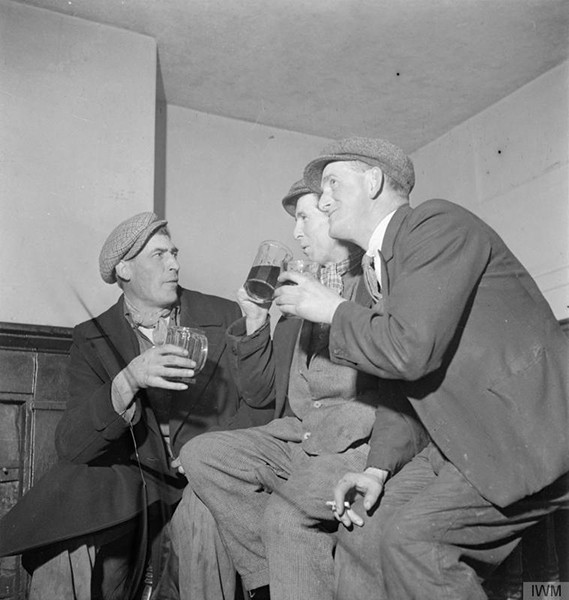
Three men discuss local issues over a pint of beer in a traditional public house, North Wales, 1944. Image courtesy of IWM
The Campaign for Real Ale
However, like a desperate strive to the bar at last orders, just before the landlord called ‘Time, Gentleman, please’ on real ale, traditional beer enthusiasts formed a group in the 1960s called CAMRA, which stands for the ‘Campaign for Real Ale’. This coincided with a revival of home-brewing at that time, and they coined the term ‘Real Ale’ to differentiate traditional beer served from the cask, to mass-produced beer served under pressure and lagers (‘Ale’ had for a long time now taken on a new meaning to include both traditionally manufactured top-fermented beer as well as the old fashioned un-hopped beer from centuries ago). CAMRA is a voluntary organisation with nearly 180,000 members world-wide in 2016.
CAMRA has historically promoted real ale brewing and consumption via campaigns, fundraising and festivals, and emphasises good quality beer, small independent breweries, brewery pubs offering local guest ales, community pubs, bigger measures, longer opening hours, tax breaks for smaller breweries and consumer rights; in essence, a real pint in a real pub! Described as one of the most successful consumer campaigns in Europe over the past few decades, the fate of real ale can be said to have been saved, with one in every six pints sold being real ale, according to The Cask Report 2014.
The resurgence in real ale drinking, at the expense of carbonated lager, is reflected in the number of real ale brewers. When CAMRA was first founded in the 1960s there were only about 350 real ale brewers in Britain, whereas the number estimated by CAMRA is now over 1500, with most of the new establishments being micro-breweries (including a few ‘brewpubs’).
Whilst sales in lagers have seen a downturn it cannot be simply said that everyone is switching to real ale as an alternative (wine consumption, for instance, has increased in recent years), but the demographic of real ale drinkers is definitely changing; it is becoming younger and less male dominated, helped undoubtedly by the popularity of beer festivals, and also folk festivals (folk music and real ale are often intoxicatingly intertwined).
This shift in the stereotypical real ale drinker from older, bearded and/or ‘tweeded’ male, to young trendy male and females has meant that real ale marketing has become more sophisticated and directed at a younger and trendier audience, often with a degree of humour, and sometimes at the expense of lager drinkers! Lager has a smoother, more subtle, and some would say simpler taste, and less of an aroma, especially the more mass-produced varieties, so it has become something of a tradition for real-ale enthusiasts to tease a lager-drinker for ‘not having any taste’ or the like. Lager is served chilled, which means taste-buds are anaesthetised, so flavour reception is reduced, so any lack of flavour goes unnoticed… some real ale companies have even based marketing campaigns around the notion…
What is real ‘Real Ale’
The subject of what is or is not a ‘real ale’ is still a contentious topic. Enthusiasts’ feelings run high, especially after a couple of pints or more… CAMRA have always advocated that real ale is a natural product brewed using traditional ingredients and left to mature in the cask from which it is served through a process called secondary fermentation. CAMRA have more recently accepted bottled versions of real ale as it remains unpasteurised and is not artificially carbonated; it is a natural live product which contains yeast for a slow secondary fermentation in the bottle.
However, there is a school of thought that CAMRA have adopted an almost Orwellian stance of ‘Cask Good, Keg Bad’ that is now outdated and the purists who brilliantly championed and saved real ale in the past are now bordering on the puritanical. Back in the day when keg beer was awful, CAMRA’s stance was valid and thankfully effective, but today, keg beer doesn’t always mean artificial mass-produced beer by mega-brewed monsters it did back in the 1960s and 1970s; far from it in fact. Cue ‘Craft Beers’.
With origins from the US, where the term craft beer means simply small, independent and traditional, craft brewing has become a 21st Century phenomena in the UK, with craft breweries such as Brew Dog and Camden Town Brewery seeing meteoric rises in sales, from an increasingly diverse and receptive audience. CAMRA has recently dismissed the practice of craft brewing as it is fundamentally ‘keg’-based brewing. However not all craft brewing uses kegs, and those that do are not keg-brewers in the mass-produced, mega-brewery sense of the word. Instead craft brewing continues to champion good quality real beer, using both traditional and more innovative ingredients and techniques.
What needs to be remembered is that CAMRA didn’t start off campaigning for ‘real ale’, but for the ‘revitalisation of ale’. It was the cack-handed keg-brewing of the mega-breweries that prompted the term ‘real’ rather than ‘revitalisation’ as a backlash against mass-production and mass-carbonation. The focus, to my mind at least, now needs to be on good beer; whether that is a ruddy real ale or a contemporary craft beer, as it’s only good if it has been reverently researched and passionately produced by artisans dedicated to the real ‘craft’ of beer-making. Anyway, debate is healthy, so agonise and articulate away over a pint of your favourite, be that real ale or craft beer, cask or bottled, served in a real British pub with all their quirks and traditions.
The British pub
The irony is that while traditional real ale brewing is booming, with the number of beers growing from hundreds to thousands in recent years, traditional British pubs are closing at an alarming rate of 30 a week. Some are saying that CAMRA’s focus should now be on saving the ‘real pub’, rather than ‘real ale’, in order to have a place to debate the merits of your pint within…
The British pub is a famed institution. At one time certain public houses were only allowed to sell beer and no other types of alcohol. Nowadays, all pubs are free to sell a wide variety of alcoholic drinks, but they are restricted on the type of beers that can be sold, with many big brewery-owned pubs restricted to sell just their own beer. ‘Free houses’ offer a wider selection of bottled & cask beers compared to brewery-run establishments. These free houses are sometimes known as ‘chalkies’, as current selections of real ale are often displayed on a blackboard. Beer is now sold in pint or half-pint measures, mostly conical or ‘nonic’ glasses (where the glass bulges out a couple of inches from the top) or rarely more traditional, ‘barrel’ or ‘dimple’ mugs.
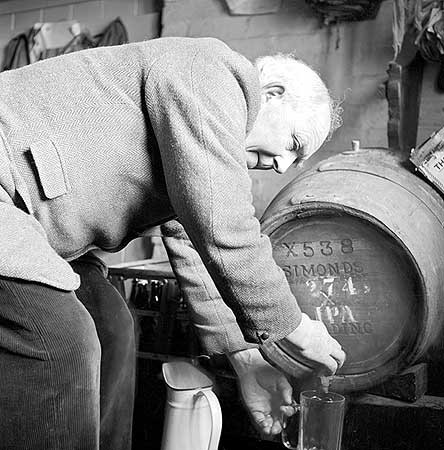
Pouring a pint from a wooden beer barrel from Simmonds Brewery of Reading, mid-Twentieth Century. Image courtesy of English Heritage
Historically, beer in pubs was drank out of tankards, made from pewter, silver or glass, as well as wood and even leather. Toby jugs were popular for a time and specialist vessels for drinking games have been around for centuries, including the ‘Yard [Glass] of Ale’, where the drinker has to ‘down’ two and a half pints in one attempt, and pottery ‘Puzzle Jugs’ where the drinker had to swallow the contents without spillage, despite the many perforations to create confusion. In the past, it was common for beer to be warmed before drinking, including the potent drink ‘flip’, a warmed ale with rum or brandy and flavoured with nutmeg, popular in both Britain and the US.
Beer warmers (or ale mullers) were used to heat the liquid, ranging from simple red-hot pokers, to custom made beer warmers, often made of copper or tin, varying in shape from boot-shaped to conical. Beer hasn’t been warmed in British pubs for decades, but it doesn’t stop people unfamiliar with British public house customs and/or lager drinkers who don’t like the taste of real ale, to [mistakenly] label the British real ale as ‘warm’, when in fact this is a legacy from long-ago! Real ale is never served chilled to disguise it’s lack of flavour – it doesn’t need to, but it is never served warm either – just ‘cellar’ temperature, which is a perfectly palatable 50-55 degrees Fahrenheit.
Real beer – be that real ale or craft beers – and real pubs signify the retention, revival and celebration of the traditional, the local, authenticity and provenance, and long may it continue.
For those of you who are thirsty for a little more beer-talk… here is a ‘half-pint’ summary of the brewing process, the landlord’s craft and different types of real ale…
Brewing Process
Beer-making is a simple recipe starting with malt. Raw barley will not ferment, so barley is malted (heated) and ground. Malt is traditionally made in a malthouse; the barley is soaked in water in big tanks (steeps) and then spread out across the malthouse floors, up to 30 cm in depth, which then sprouts. It is then transferred to a kiln where it is heated to stop it growing, and then ground.
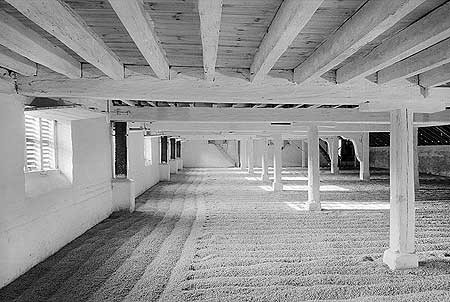
Historically, nearly every town and village in the UK would have had a traditional Malthouse; today there are only a handful still in use. The Maltings, Stowmarket, Suffolk. Sept 1970. Image courtesy of English Heritage
Hot water is added to the malt and the thick porridgy liquid is left in the ‘mash tun’ for several hours whilst the sugars in the malt dissolve. The resulting sweet liquid (wort) is extracted, to which hops are added (the most traditional brewers use the whole hop flower) and then boiled for at least an hour in copper kettles. The hopped wort is then run over a bed of boiled hops as a filter.
Yeast is added which feeds on fermentable sugars, turning the sugar into alcohol and carbon dioxide. Yeast cells divide rapidly in the warm (65 -72F), sweet liquid. The flavour, strength and colour of beer depends upon many variables, including the variety of barley, how long and the heat at which it is malted, the variety of hops, when and how often they are added, the temperature of the mash, but the fermentation process is key.
Real ale is top fermenting, a short and warm process of warm fermentation. Remaining yeast continues to convert sugar into alcohol and help rid beer of any rough aftertastes undergoing secondary fermentation, what is known as conditioning in the cask, as the beer is still alive.
Finings are then added to assist the ‘dropping’ of the yeast to give a clearer beer. Finally, the beer is then poured into casks for storage, which are then sealed and sent to pubs. A great place to see the real ale brewing process is the ‘Black Sheep’ brewery in Masham (pronounced ‘Massam’), North Yorkshire, and you can see it for yourself as well as taste it afterwards!
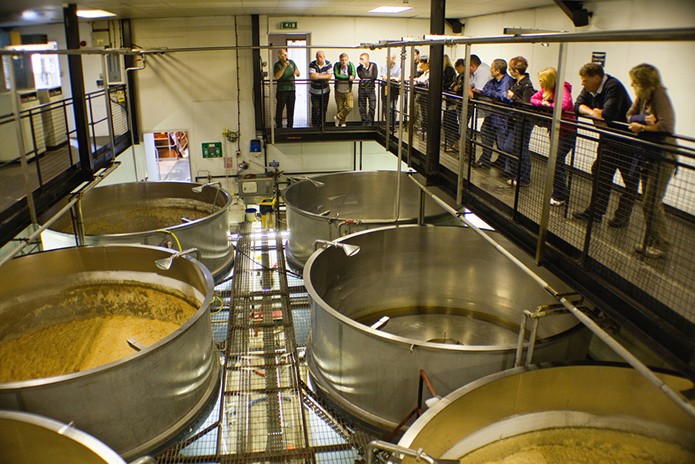
A group of visitors observes fermentation vats whilst on an official tour of the brewery facilities at Black Sheep Brewery. Image courtesy of TJ Blackwell, via Wikimedia Commons
Traditional landlords are skilled in knowing when to serve cask-conditioned ales. Gravity pressure serves the beer direct from a cask behind a bar, but if cask is down in the cellar, a beer engine is needed, an air-tight piston chamber with a handle, which when pulled down raises a piston and draws usually ½ pint of beer. The beer should be 12 – 14C, somewhat cooler than room temperature (certainly not ‘warm’!), but the correct temperature to taste the subtle flavours.
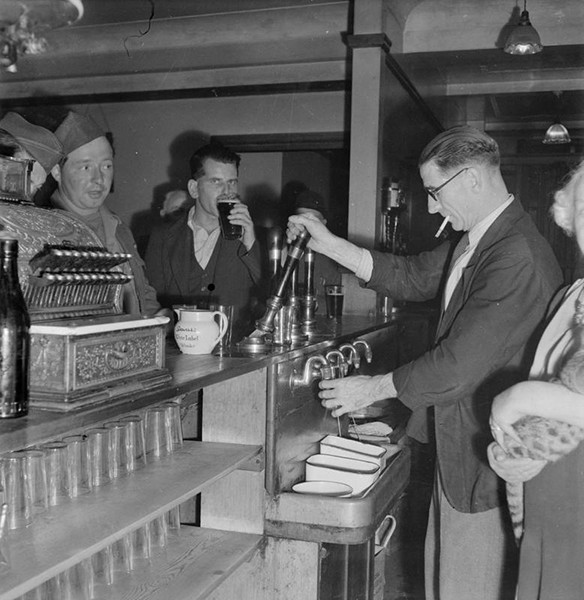
A barman pulls a pint using a beer pump in a traditional pub in Berkshire, England, for an American soldier during the Second World War. Image courtesy of IWM
Flavours and Styles
All real ales have a distinctive ale taste; sweetness of malts at the front of your mouth then drier bitter flavours at the back of your mouth as you swallow – the finish. But there are many types of real ales consumed in Britain, with many different colours, including;
IPA (India Pale Ale) – potent, high in hops, and therefore natural preservatives, suitable for travelling long distances (it was popular for the colonial market historically), weaker than the less hoppy version Pale Ale, which is often used interchangeably with bitter.
Golden Ale – a modern beer, developed by craft brewers to tempt younger drinkers, with golden amber honeyed hues, light refreshing taste, often served cooler as an alternative to lagers.
Bitter – a ‘running’ beer, used young, darker, hoppy – so bitter, but balanced by biscuity maltiness and fresh fruitiness of hops & yeast, often having a Best Bitter version, which is stronger; 4%+
Rounder, gentler, younger Milds, less hoppy – a survivor of hopless brewing – cheaper and weaker; viewed as a ‘workers’ beer historically. Fairly mild, lightly hopped, brown to red Browns.
Old Ale – used aged, very strong, rich and sharp, now applied to medium strong dark beers.
Barley Wine – 18th & 19th Century warring with France meant Claret wines were out of favour, so country houses often had their own breweries; one of the butler’s jobs was to brew and decant barley wine into cut glass goblets. Sweet and hoppy tasting with a kick!
Porter & Stout – strong, darkest, sweet, hoppy beer for the thirsty 18th Century London porters; later versions were jet black. Malt restrictions during World War One curtailed this type of ale.
Incidentally, my favourite real ales are the darker Black Sheep in the winter and golden blonde Hopback ‘Summer Lightning’ in the summer, although I’m partial to sampling as many as possible whenever I can!
REFERENCES:
CAMRA’s Book of Beer Knowledge, Jeff Evans
The Real Ale Almanac, Roger Protz
Real Ale: Recipes, History & Snippets, Bill Laws
Beer: The Story of the Pint, Martyn Cornell
The Cask Report 2014

